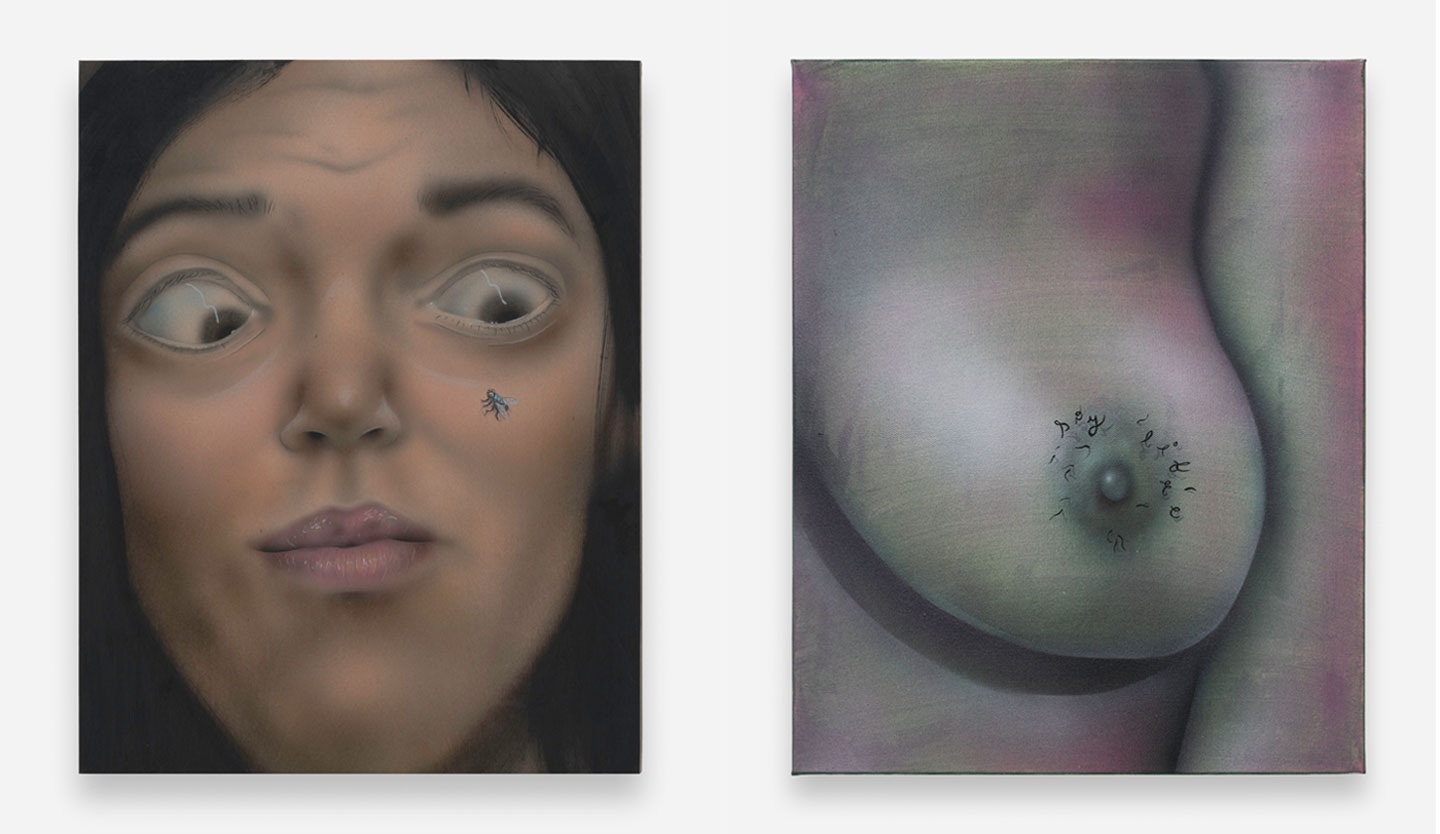First published in 1997, Eckhart Tolle’s The Power of Now: A Guide to Spiritual Enlightenment has been a bestseller since Oprah began singing its praises in 2000, most recently landing the author a feature on Kendrick Lamar’s Mr. Morale & The Big Steppers. When artist Larissa De Jesús Negrón read the book, late last year on a solo residency in Spain, she quickly identified her own psychology in its pages. “It blew my mind, I truly felt the meaning of being present, understanding it in a way that wasn’t intellectual but spiritual,” she explains, speaking over Zoom from a London hotel. “But that moment was fleeting, so when I came back to New York all I wanted was to feel it again. That’s when I made the pieces in Distraída.”
Now showing at Guts Gallery, Distraída delves into the state of being permanently distracted, something Larissa has fought with for a long time she says, caught between reliving previous trauma and engaging with perceived future scenarios. “This search for presence is a recurring topic in my recent work. I’ve been wanting, in my personal life, to feel more grounded, more secure spiritually, and not rely so much on external validation,” she shares. “I get consumed by both my past and the future, so my mind is not ever here. That’s in all of the work – random distractions that symbolise my scattered mind – and I want you to feel some sort of uneasiness [looking at it], that’s the main thing I want you to feel. Like something’s off, that I’m not present.”
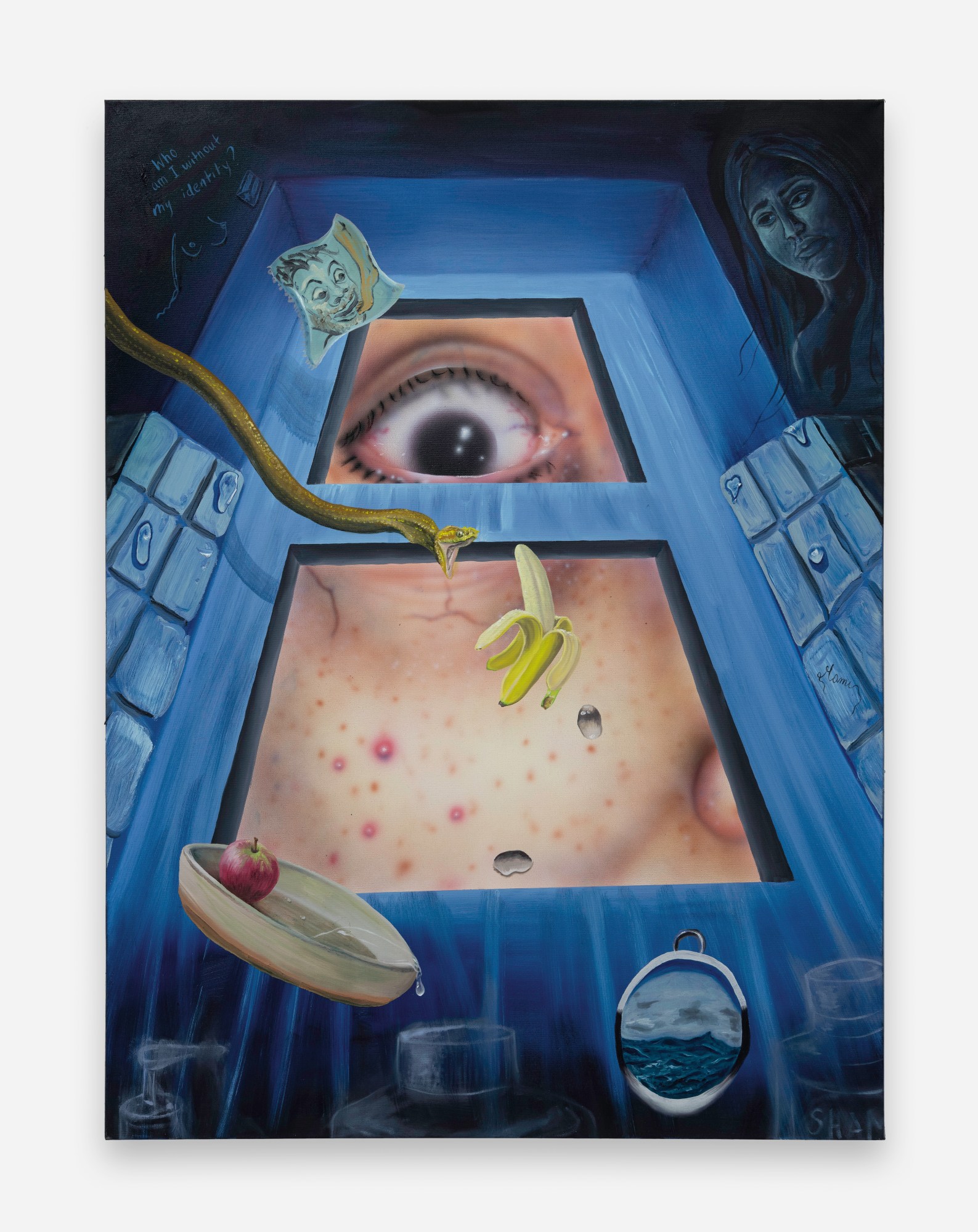
Born and raised in Guaynabo, Puerto Rico, Larissa moved to New York at 19 to study for a BFA at Hunter College, and today lives and works in Queens. Aged nine, with her mother keen for her to adopt a hobby, she was signed up for art classes. “I was really bad at school, but art was the first thing that I was really good at,” she remembers, adding that it wasn’t a guaranteed fit. “There were a couple of trial and errors – I took singing classes, guitar classes, different types of dancing. My mom wanted me to be really good at one thing, because her mom was very strict and never gave her the opportunity to pursue what she wanted: my mom wanted to be an architect and ended up in computer programming because her mom told her that the future was in computers. So that’s why she always pushed me to do what I love, but to do it with heart.”
While it was with her mother’s encouragement that she landed on this creative pathway, Larissa’s father was similarly important in shaping the type of work she has gone on to make. “He was very into surrealism and had a lot of Dalí posters around the house,” she recalls, reflecting on her earliest influences. “His passion for Dalí, how he talked about him, just amazed me. Being a little girl and looking at these crazy paintings, I was like ‘damn, you can do a lot with paint, you can tell a lot of stories’.” That curiosity, for art that goes beyond the visual component, has continued to inform Larissa’s practice and is a core element of what fills her pictures. “It’s not just about expressing yourself through the work, it’s about telling a story and telling people your perspective,” she notes.
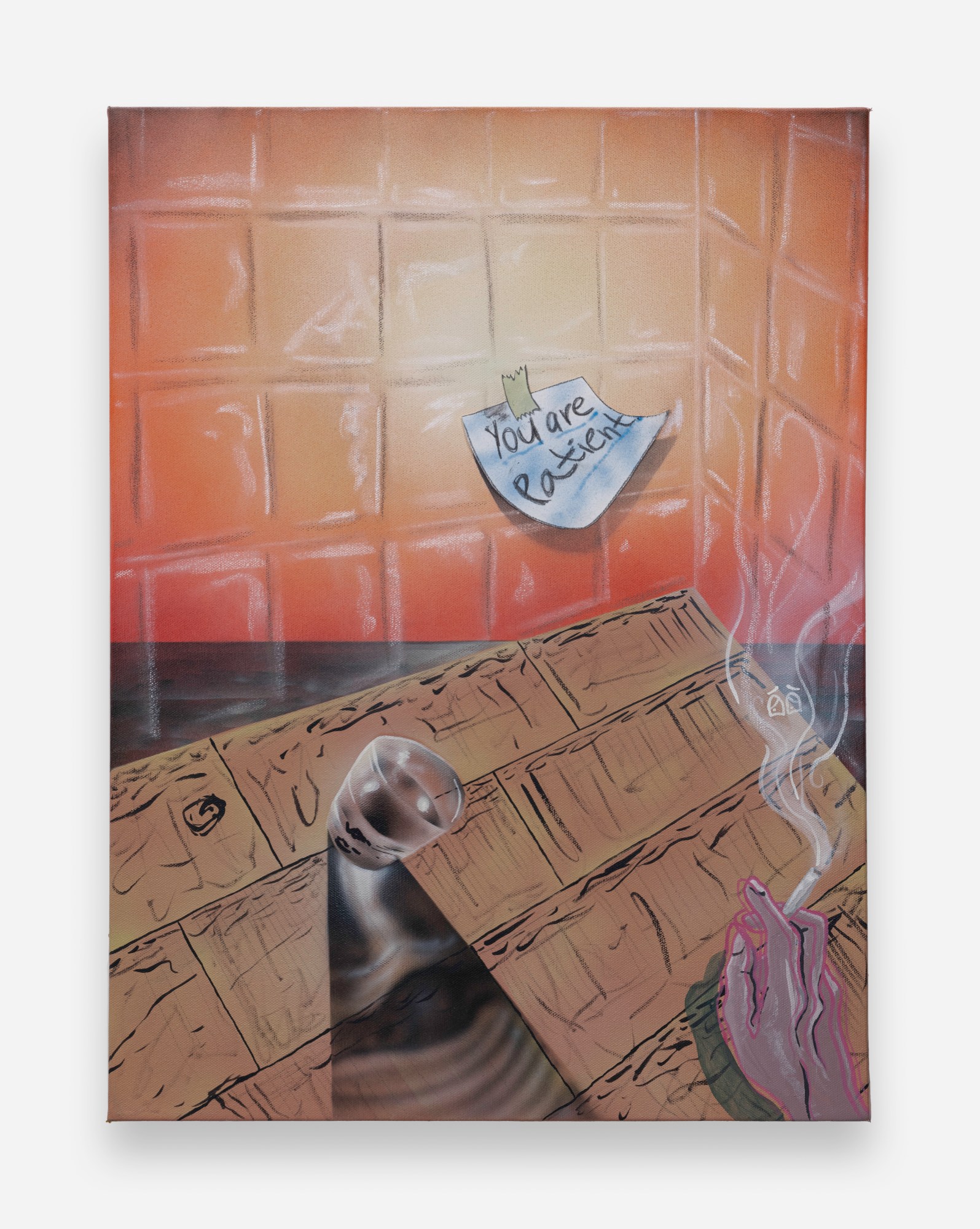
“My work takes a lot from surrealism, aesthetically, but I don’t follow the same laws of chance,” she continues. “The things that I talk about in my work are trauma, womanhood, gender roles – I’m a young artist, a woman of colour working today – so I take from my own experience.” Employing different materials and techniques including pastels, paints and airbrush, Larissa’s work draws on the shared worries of her peers and echoes a common condition of dissatisfaction. In the artwork “Distracted”, she uses a fly, frustratingly perched on a woman’s face, to represent the wider interruptions to her world, while in “Obsessed with everything” we see a woman’s mascaraed eye and stressed out skin looking in through a window onto various anxiety-inducing images; the phrase ‘who am I without my identity?’ hovers over the scene in the right hand corner.
Nature is a key feature of Larissa’s work, with water in particular a recurring motif used by the artist as a balm of sorts, confronting certain anxieties. “I associate water with a lot of things that revolve around femininity and fluidity of thought, change, and how water just moulds into whatever form you put it in. I see myself as a mouldable person, and I enjoy the process of evolving and the contradictions that come with that,” she says. “Water’s a nice metaphor for that, and nature reminds me we’re part of a greater ecosystem. You know, all the things we worry about, at the end of the day can be washed away by a wave, and that gives me perspective. It’s a weird thing but it gives me peace of mind.”
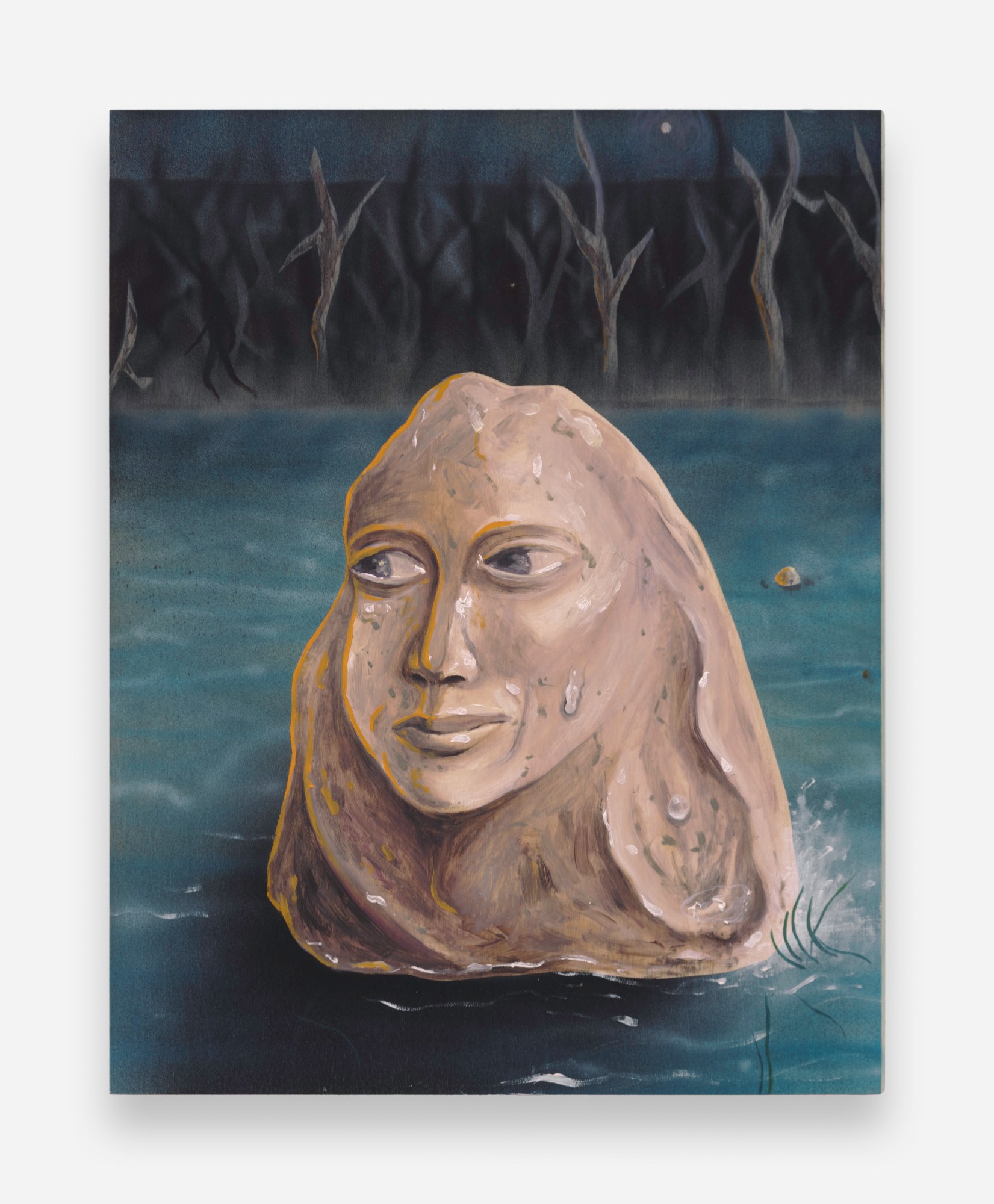
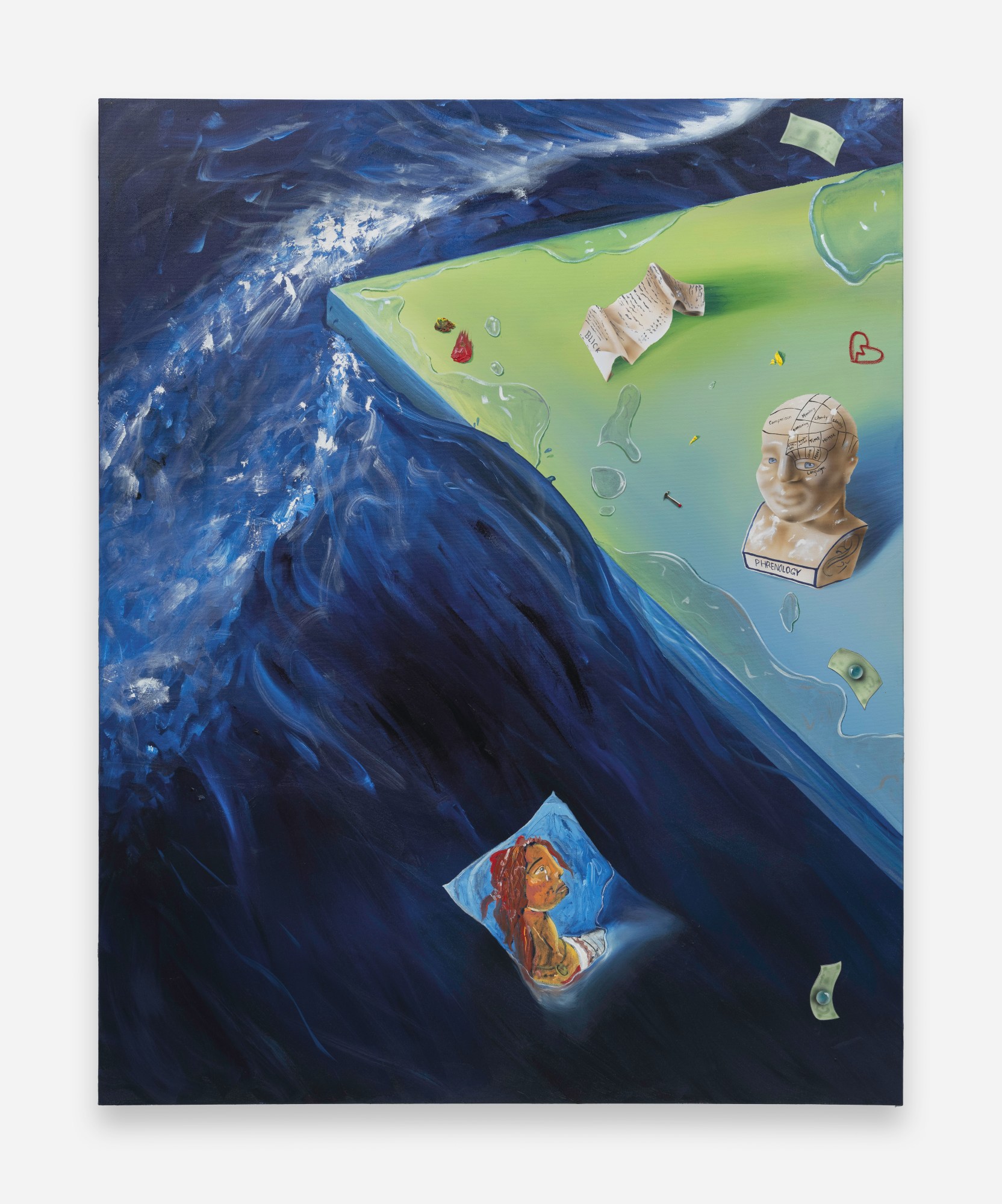
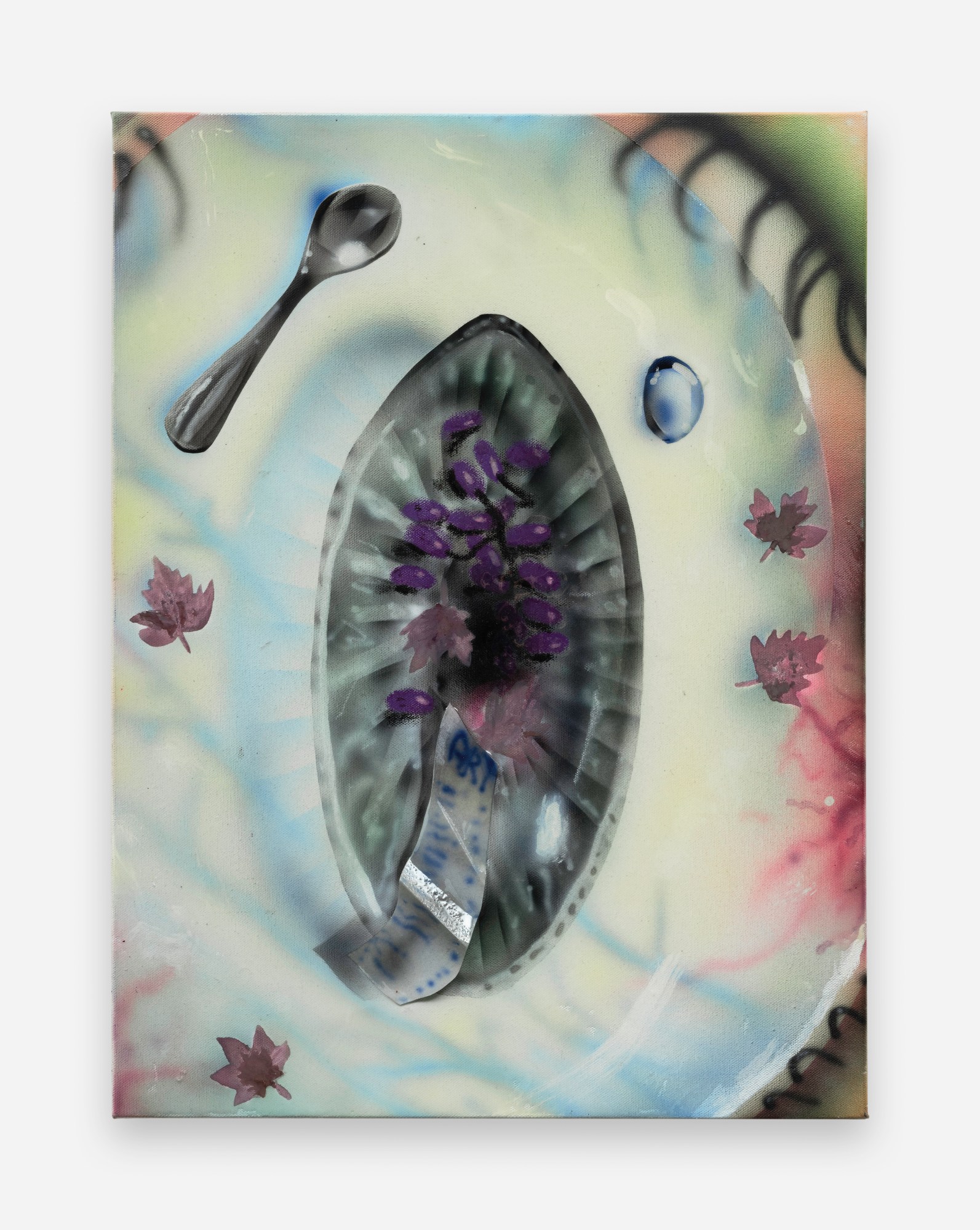
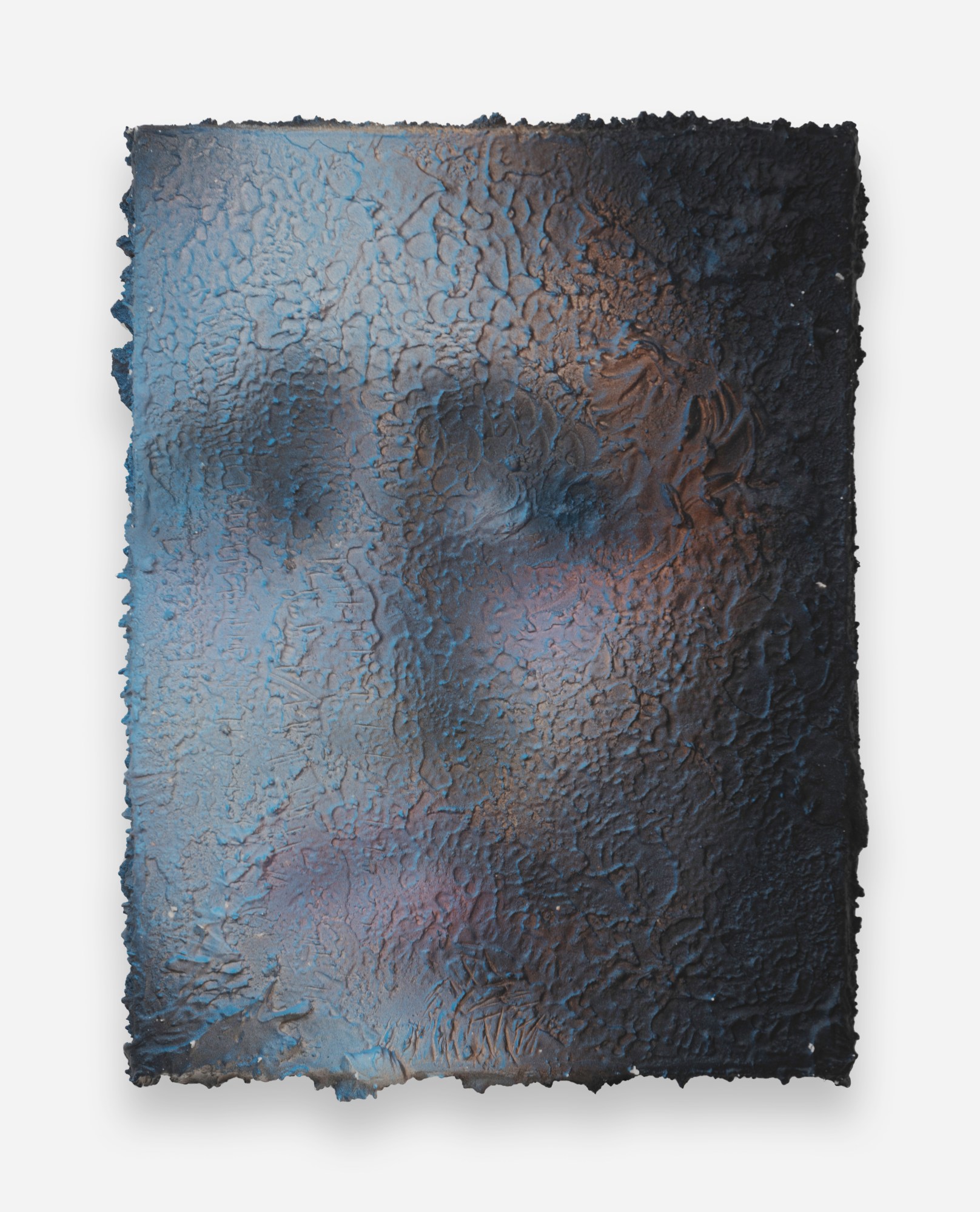
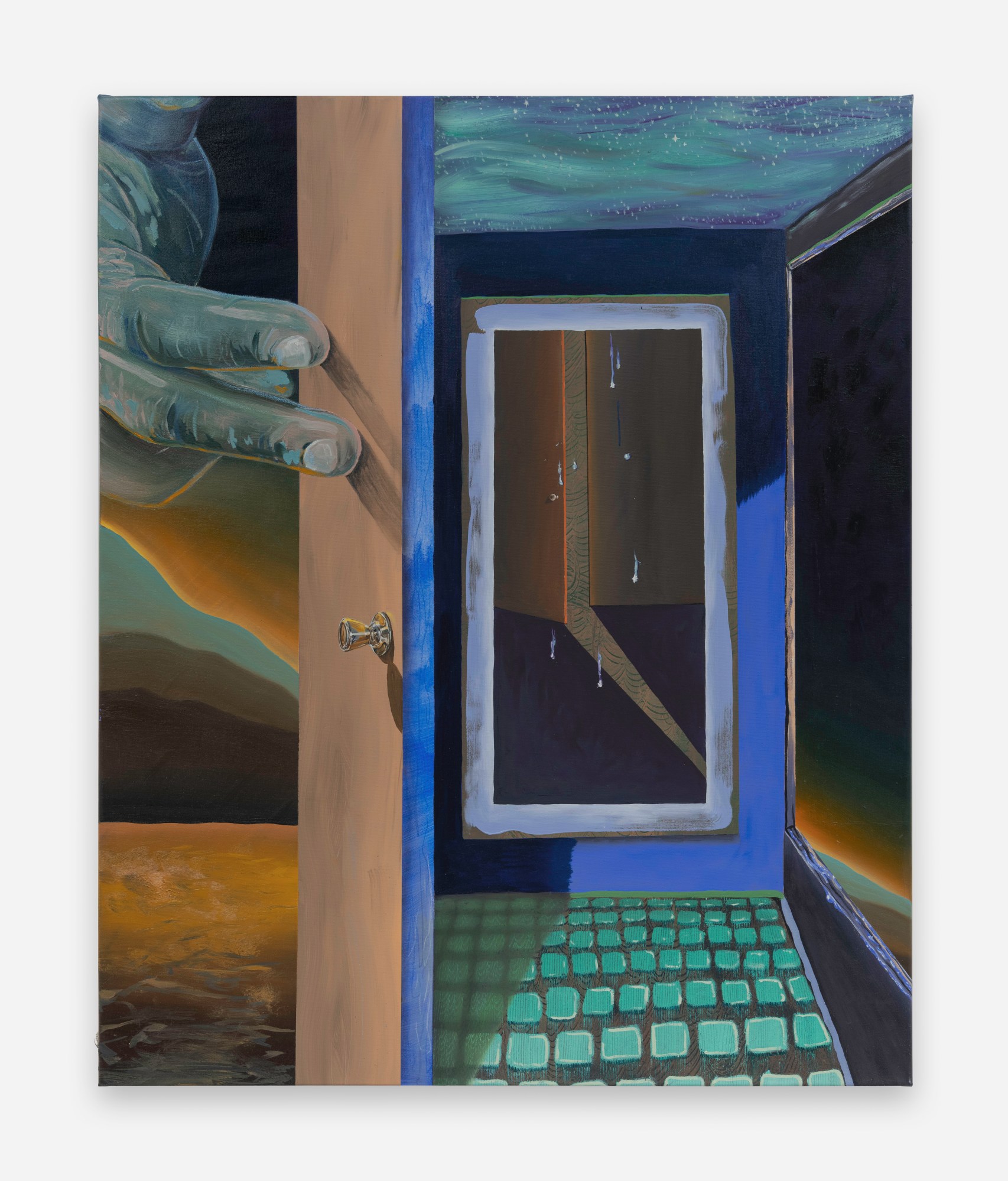
Distraída is open at Guts Gallery until 31 March 2023
Credits
Images courtesy of Larissa De Jesús Negrón and Guts Gallery
